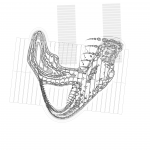Technology, the driving force of our modern world, has been harnessed primarily for one overarching purpose: to make human lives more convenient. It’s an undeniable fact that the relentless march of technological progress has transformed our existence in ways our ancestors could hardly have imagined. From the invention of the wheel to the development of smartphones, technology has been our constant companion, enabling us to accomplish tasks with greater efficiency and providing us with instant access to a wealth of information.
The convenience brought about by technology is evident in almost every aspect of our daily lives. From the moment we wake up to the sound of our alarm clocks, which are often integrated into our smartphones, to the moment we fall asleep while streaming our favorite shows on smart TVs, our lives are intertwined with gadgets and gizmos designed to make our existence smoother and more comfortable.
However, as we revel in the convenience and efficiency that technology affords us, it’s worth pondering whether there is a place for technology that doesn’t cater to our immediate needs and desires. Is there room for technological innovation that doesn’t primarily serve human convenience? This question sparks a fascinating debate about the essence and purpose of technology in our society.
Imagine a world where technology is not solely focused on enhancing human convenience. Picture a realm where technology is allowed to flourish in unconventional ways, where it isn’t bound by the constraints of immediate practicality. Such technology, while seemingly wasteful from a utilitarian standpoint, might serve a different purpose altogether. In this context, we can draw an analogy to the natural world.
In the animal kingdom, there are creatures that humans have domesticated for their utility—cattle, chickens, and horses, for instance. These animals have been selectively bred and raised to meet human needs for food, transportation, and labor. They are the embodiment of technology designed to make human lives easier. We can think of them as the “domesticated animals” of the technological world.
On the other hand, consider animals that exist in the wild, untouched by human intervention. These creatures, like the majestic elephants roaming the African savannah or the elusive snow leopards of the Himalayas, don’t serve any direct human purpose. They are not domesticated; they are not harnessed for our convenience. They live in their own ecosystems, following their own natural instincts and rhythms. We can liken these creatures to “wild technology.”
Just as wild animals play a crucial role in maintaining the balance of their ecosystems, wild technology could serve a purpose beyond human convenience. It could be a source of inspiration, a testament to human creativity, and a reminder that innovation is not solely driven by immediate utility. Wild technology might not have a practical application in the traditional sense, but it can push the boundaries of what’s possible, challenge our preconceptions, and offer unexpected insights.
In this context, let me introduce my work, “Just Alive (with no particular aim).” This creation can be seen as a manifestation of wild technology. It doesn’t aim to make your life more convenient or solve a specific problem. Instead, it exists for the sake of exploration, expression, and the sheer joy of pushing the limits of what technology can achieve. It’s a piece of art, a journey into the uncharted territory of innovation, and a reminder that technology’s potential extends far beyond mere utility.
In conclusion, while technology’s primary role has been to enhance human convenience, we should embrace the idea that there’s room for “wild technology” in our world. This untamed innovation can coexist with the practical, serving as a source of inspiration and a testament to human creativity. “Just Alive (with no particular aim)” is just one example of how technology can transcend the boundaries of utility and become a form of wild, unbridled innovation that enriches our lives in unexpected ways. In a world where we celebrate both convenience and creativity, we can truly harness the full potential of technology for the benefit of humanity and the world at large.


